Kinver Edge and the Rock Houses: A Fascinating Historical Landmark
Kinver Edge and the Rock Houses are a unique and fascinating destination in Staffordshire, England. The area is owned and managed by the National Trust, allowing visitors to explore the beautiful countryside and historic rock houses carved into the soft red sandstone.
The rock houses are a particular highlight of Kinver Edge, and they are the last troglodyte dwellings occupied in England. These cave houses were excavated into the local sandstone and inhabited until the 1960s. Today, visitors can explore the famous Holy Austin Rock Houses, which have been cozily restored to help visitors soak up the atmosphere of these unusual homes. The houses feature stoves, furniture, windows, and doors—all set into the sandstone, just as they were when the houses were lived in.
The Holy Austin Rock Houses:

This post may contain affiliate links. Please read our disclosure and privacy policy for more information.
In addition to the rock houses, Kinver Edge is full of surprises. Visitors can enjoy sweeping views of the surrounding countryside, explore the wildlife haven in the heath, and participate in various games and activities during the summer months. Whether you’re looking for a family day out or a peaceful escape to the countryside, Kinver Edge and the Rock Houses are a must-visit destination.
History of Kinver Edge
Kinver Edge is a sandstone ridge in Staffordshire, England. The area has been inhabited for thousands of years, with evidence of human activity dating back to the Bronze Age. The name “Kinver” is believed to be derived from the Old English words “cyne” and “feorh,” meaning “royal life” or “royal spirit.

During the Iron Age, the hillfort on Kinver Edge was one of the largest in the area. The fortifications would have included a series of ditches and ramparts, which would have protected the people living within the hillfort.
Kinver Edge was part of the Royal Forest of Kinver in the Middle Ages. The forest was used for hunting, and the area was known for its abundance of game, including deer and wild boar.
In the 18th and 19th centuries, Kinver Edge became a popular destination for tourists and day-trippers. The area was renowned for its natural beauty, and visitors would come to admire the stunning views from the top of the ridge.
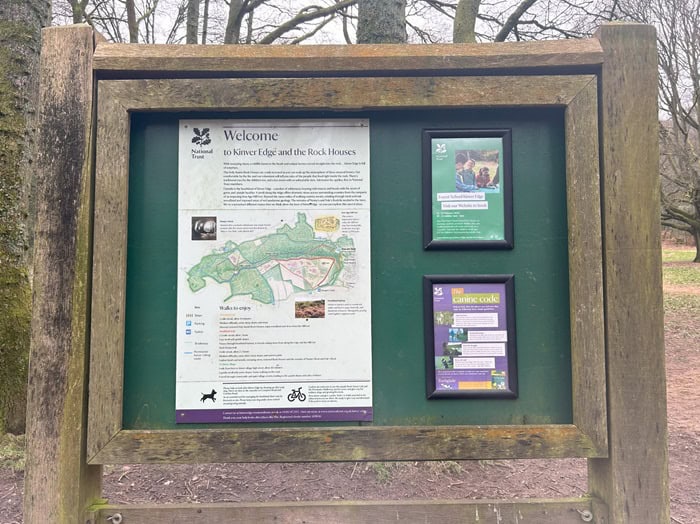
Kinver Edge and the Rock Houses Architecture and Design
The rock houses of Kinver Edge are a unique and fascinating example of cave dwellings in England. Their design is simple and functional. The interiors are small and cozy, with low ceilings and small windows. Tunnels and staircases connect the rooms, and fireplaces provide warmth in each room.
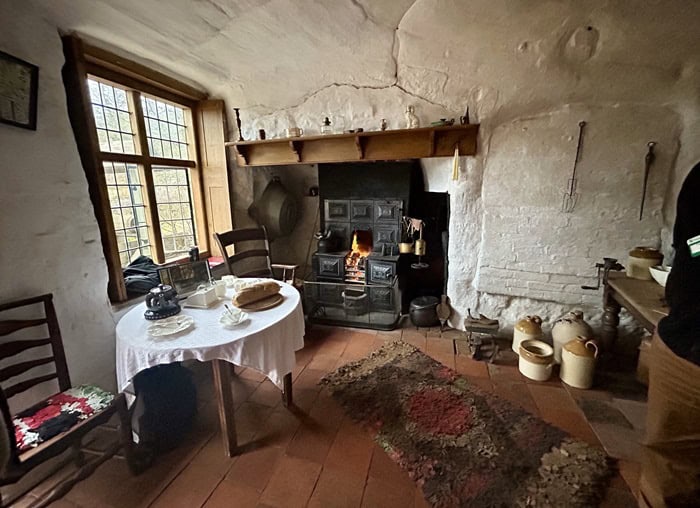
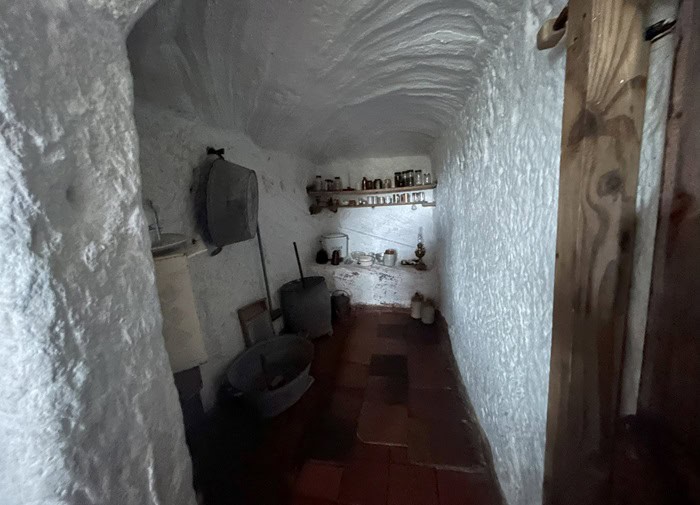

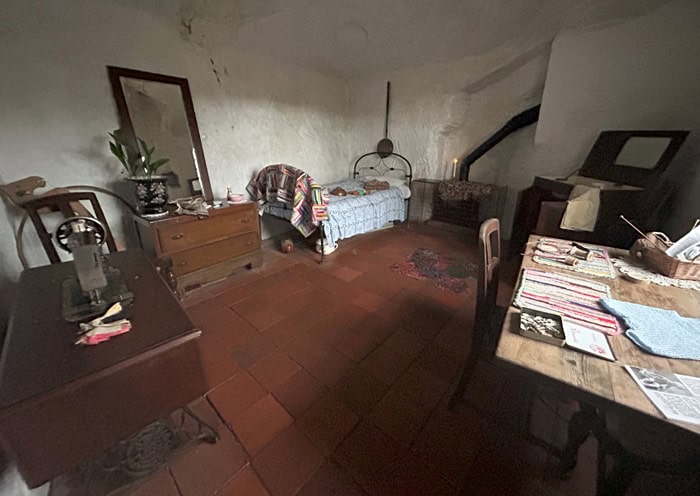
The houses were initially used as dwellings for agricultural workers and quarrymen. Later, they were used as holiday homes for wealthy families who wanted to escape the city. Today, they serve as a unique tourist attraction and provide insight into the lives of the people who once lived there.
The rock houses at Kinver Edge are believed to have been inhabited since the late 18th century. Agricultural workers and miners initially used them as homes and carved them out of the soft sandstone. The houses were occupied until the mid-20th century.
Historical Significance of Kinver Edge and the Rock Houses
The Rock Houses of Kinver Edge are the last troglodyte dwellings occupied in England and are a rare example of a type of dwelling that was once common in many parts of the world.
What is a Troglodyte Dwelling?
Local people lived in these cave-like houses carved into tufa limestone cliffs for centuries. The buildings are now homes, museums, restaurants, wine cellars, shops, and increasingly popular places to stay. Troglodyte hotels even exist!
The Kinver Rock Houses were inhabited for hundreds of years and were essential to the local community. They were also used as hideouts by smugglers and highwaymen, who took advantage of the caves’ remote location to evade the authorities.
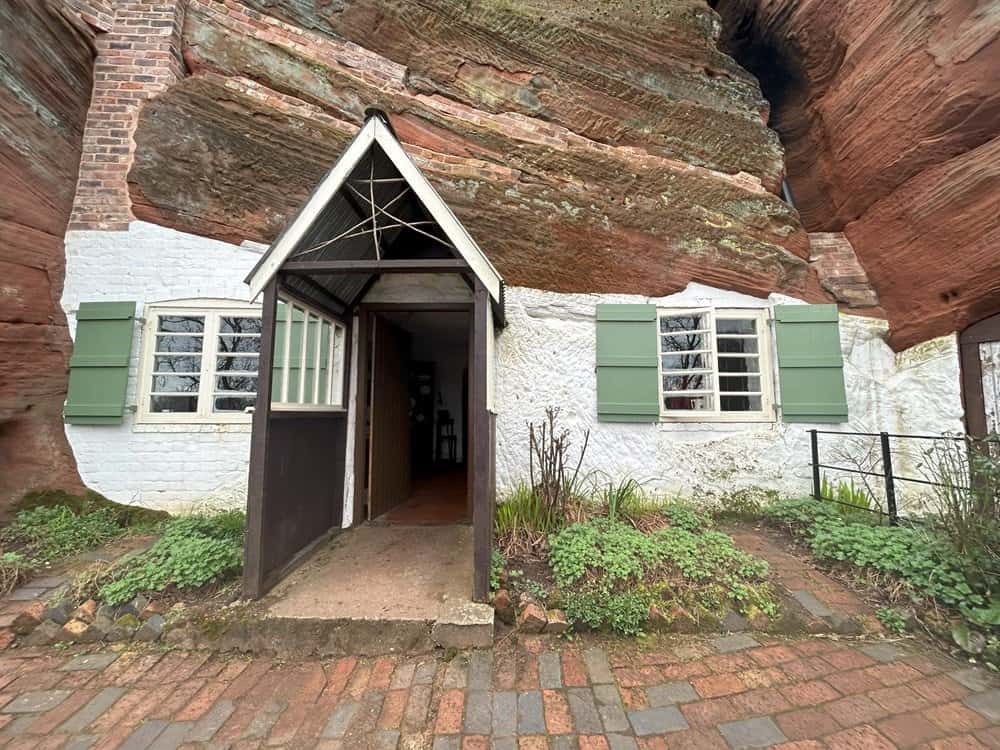
Geology and Topography
Kinver Edge is a sandstone ridge in Staffordshire, England. It is part of the Mercian Triassic sandstone formation, laid down approximately 250 million years ago. The sandstone is composed of fine-grained quartz and feldspar and exhibits a distinctive reddish color due to iron oxide.
The unique topography of Kinver Edge has been shaped by millions of years of wind and water erosion. The sandstone has been sculpted into various exciting features, including caves, cliffs, and rock formations.
In addition to the rock houses, Kinver Edge is home to several other interesting geological features. The sandstone cliffs and outcroppings provide habitat for various plant and animal species, including heather, gorse, and adders. The ridge also offers stunning views of the surrounding countryside, including the nearby Clent Hills and Wyre Forest.

Caves and Fort At Kinver Edge
In addition to the rock houses, when you go up to the section where the cafeteria, bathrooms, and seating area are, there are some caves that you can explore.
These structures are said to be the remains of a fort, a defense system standard in the early years.
In more recent years, the strategic location of Kinver Hillfort was exploited for Second World War defenses, and you can still see a home guard shelter at the ramparts of the southwest corner.
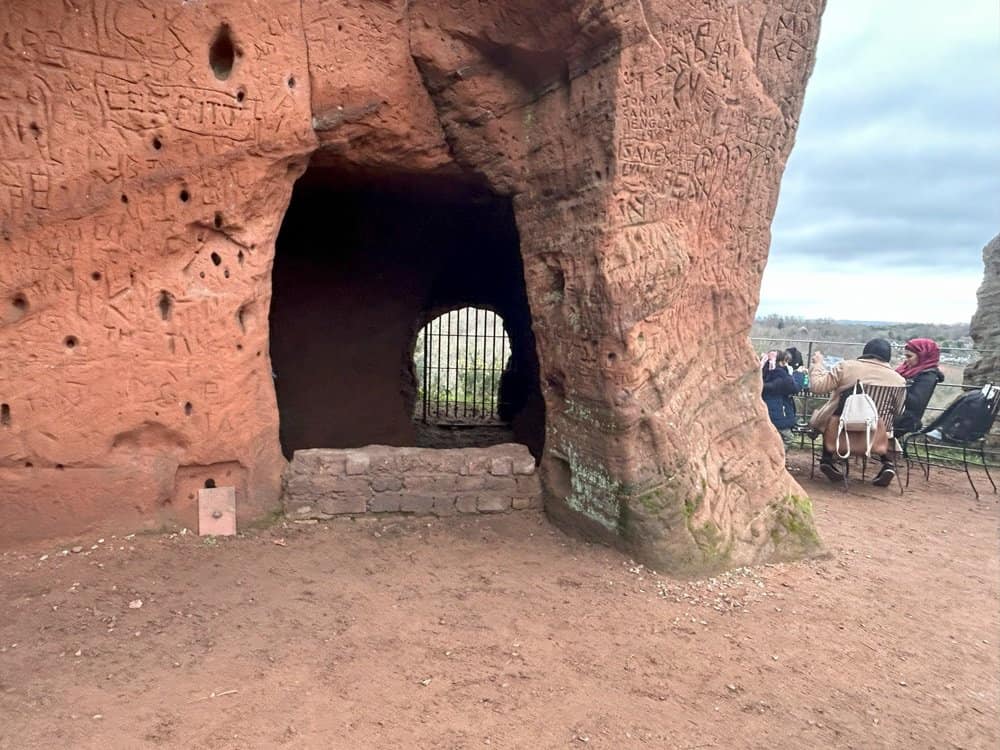

Conservation Efforts And The Role of the National Trust
The National Trust has managed Kinver Edge and the Rock Houses since 1907. The organization’s primary goal is to conserve and protect the natural beauty of the area and the historic rock houses. For years, the National Trust has worked tirelessly to maintain the area’s unique ecology and ensure visitors enjoy the site’s beauty.
Preservation and Restoration Projects
The National Trust has undertaken various preservation and restoration projects to protect the natural and cultural heritage of Kinver Edge and the Rock Houses. These projects include restoring the rock houses, which were in disrepair before the National Trust acquired them. The organization has also been working to preserve the unique ecology of Kinver Edge, which includes rare plant species such as sheep sorrel, common storksbill, and birdsfoot pea.
Sheep Sorrel

To achieve this goal, the National Trust has implemented various conservation measures, including removing invasive plant species, creating new habitats for rare species, and reintroducing native species. The organization has also worked with local farmers to promote sustainable land use practices and to protect the area’s fragile ecosystem.
In addition to these efforts, the National Trust has been working to raise awareness about the importance of conservation and the need to protect Kinver Edge and the Rock Houses. The organization has organized educational programs and events to engage visitors and promote a greater understanding of the site’s unique ecology and history.
Visiting Kinver Edge and the Rock Houses
Visitors who want to learn more about the area’s history can take guided tours of the rock houses. The tours are led by knowledgeable volunteers who can answer questions and provide additional information about the houses and the people who live there.
Or, if you do not want to take a guided tour, you can pay for admission and then explore at your own pace. Staff members are at various points of interest, and you can explore each house. They are more than happy to talk to you about the unique history of these houses.
Kinver Edge hosts various events and activities throughout the year, including traditional games and toys, which anyone can enjoy on the meadow. During the summer months, visitors can challenge their friends to a game of giant 4 in a row, try their hand at welly wanging, or give their family the chance to experience the unique lifestyle of the Rock House residents.
Amenities and Accessibility
Kinver Edge offers a range of amenities for visitors, including layby car parking on Compton Road, Sandy Lane, and Comber Road, which are open 24 hours a day to access the countryside. Gated car parks are also available on Kingsford Lane DY7 5NP & DY11 5SB and Blakeshall Lane DY11 5XT. From March 31st onwards, the car park opening times are 9 am—7 9 am.
The Rock Houses are accessible to visitors with disabilities, with ramps and other accommodations available to ensure everyone can enjoy the unique experience of exploring these historic buildings.
There is also a cafe where you can get a drink or a snack while visiting. There are also public bathrooms.

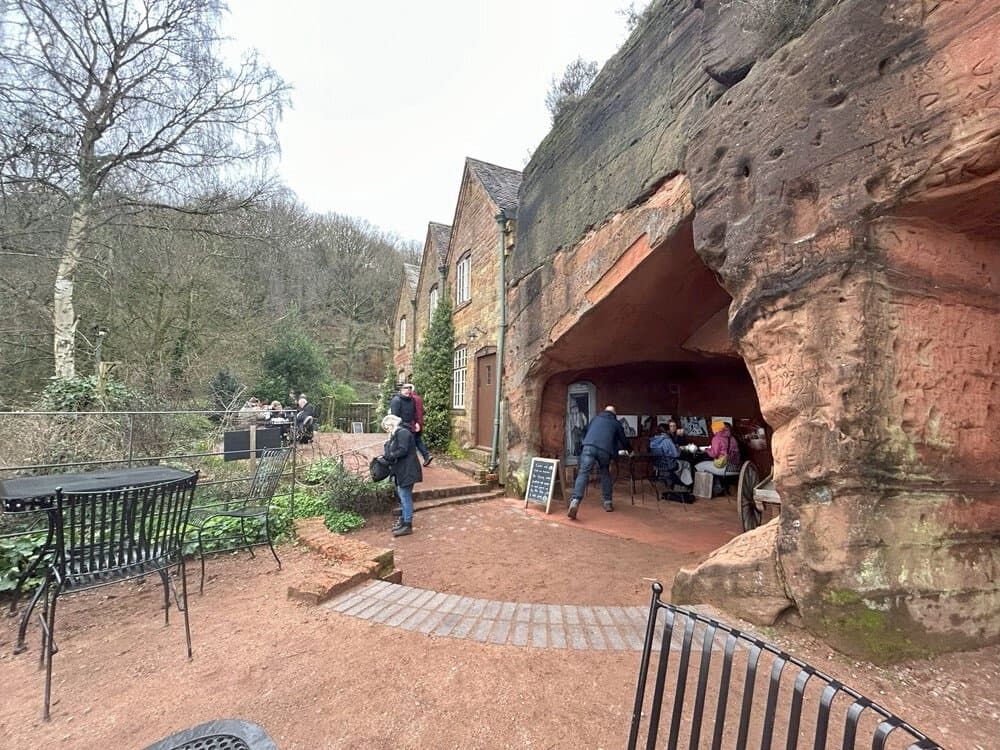
Flora and Fauna
Kinver Edge is home to diverse flora and fauna, making it an ideal destination for nature lovers. The area contains two areas of heathland, which support a variety of heather, gorse, and bilberry. The woodland areas are home to various trees, including oak, ash, birch, and holly.
During the summer months, visitors to Kinver Edge can spot a variety of butterflies, such as the white admiral in the woodland and the brown argus on the heathland and grassland. Over 700 species of moths have been recorded on Kinver Edge, including the angle-striped sallow, which can only be found in Staffordshire at this site. Visitors can attend moth-trapping events in the summer to see these night-time fliers.
The White Admiral

The area is also home to various bird species, including the green woodpecker, the nuthatch, and the buzzard. Visitors may also spot reptiles like the common lizard and the slow worm and mammals like the badger and the fox.
In Literature and Media
Kinver Edge and the Rock Houses have inspired many writers and artists. Their unique architecture and history have been featured in several books, documentaries, and TV shows.
Tolkien may have drawn inspiration from these rock houses for his Hobbit holes. The houses may have inspired Tolkien’s imagination, but he never confirmed this, given that he lived near Birmingham and mentioned that the Midlands inspired him, it seems likely.
Research and Archaeology
Extensive research and archaeological investigations have been conducted on Kinver Edge and the Rock Houses. The National Trust manages the site and has conducted several surveys and excavations to understand its history and significance better.
In recent years, the National Trust has also conducted surveys of the rock houses themselves. These surveys have revealed important information about their construction and use. For example, it is now known that the houses were carved out of sandstone using simple tools such as chisels and hammers. They were also fitted with wooden doors and windows, which have since decayed.
The National Trust has also conducted surveys of the surrounding landscape, including the quarries and mines that provided the sandstone for the rock houses. These surveys have shed light on the local economy and the social and economic conditions that led to the construction of the rock houses.
Frequently Asked Questions
What are the opening hours for Kinver Edge and the Rock Houses?
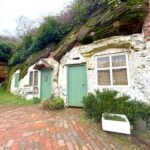
Kinver Edge and the Rock Houses are open daily from 10:30 a.m. to 4:00 pm.
How much does it cost to visit Kinver Edge and the Rock Houses?

The entry fee for Kinver Edge and the Rock Houses is £5 (approximately USD 6.44 or €5.48). However, members of the National Trust are free to enter.
What is the history behind Kinver Edge’s Rock Houses?

The Rock Houses on Kinver Edge were carved into the sandstone cliffs and used as homes by the last troglodyte families in England. The houses were occupied until the early 20th century, and visitors can now explore the restored lower rock houses that contain a recreated 1900 parlor and bedroom open to the public (entrance charges apply for the recreated rooms).
Are there guided tours available for Kinver Edge and the Rock Houses?

Yes, guided tours are available for Kinver Edge and the Rock Houses. Visitors can join a guided tour to learn more about the area’s history and geology. The tours are led by knowledgeable volunteers who can offer insight into the unique features of Kinver Edge and the Rock Houses.
What are the best walking routes around Kinver Edge?
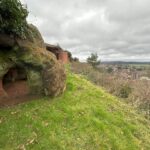
Several walking routes around Kinver Edge offer stunning views of the surrounding countryside. One of the most popular routes is the Kinver Edge and Holy Austin Rock Houses Circular, which takes visitors through the forest to the top of Kinver Edge, along the ridgeline, and then down to visit the Holy Austin Rock Houses. Another popular route is the Kinver Edge and Cave Houses Circular, which takes visitors through the woodland to the rock houses in Holy Austin Rock.
How can I purchase tickets to visit Kinver Edge and the Rock Houses?
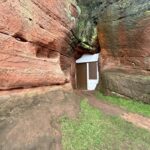
Tickets to visit Kinver Edge and the Rock Houses can be purchased online or at the property on the day of your visit. Visitors can also become members of the National Trust to gain free entry to the property.
Closing Thoughts
Kinver Edge has a rich and fascinating history and is a fascinating example of the geological and cultural history of England’s West Midlands. The sandstone ridge and its unique features allow visitors to explore the area’s natural beauty and learn about the lives of the people who once called it home.
It’s a great afternoon out for anyone interested in archeology or history. Once you’ve viewed the rock houses, spend the rest of your time exploring the village of Kinver!
Looking for more days out in England? Start here:
- 20 Of The Best British Family Days Out
- Belfast Peace Walls – The Black Cab Tour
- Castle Howard – Yorkshires Brideshead Revisited
- Chatsworth House – England
- Harewood House – England
- Harrogate Majestic Hotel: A Luxurious Stay in the Heart of North Yorkshire
- North Yorkshire England – The Complete Guide
- Ripon Yorkshire: The Ultimate Guide On Things To Do In England’s Hidden Gem
- Turkish Baths In Harrogate, England
- York – The Heart Of The Viking Territory
- Yorkshire Lavender Explored
- Whitby Abbey – The Complete Guide
Brit On The Move™ Travel Resources
Ready to book your next trip? Use these resources that work:
Was the flight canceled or delayed? Find out if you are eligible for compensation with AirHelp.
- Book your Hotel: Find the best prices; use Booking.com
- Find Apartment Rentals: You will find the best prices on apartment rentals with Booking.com’s Apartment Finder.
- Travel Insurance: Don’t leave home without it. View our suggestions to help you decide which travel insurance is for you: Travel Insurance Guide.
- Want to earn tons of points and make your next trip accessible? Check out our recommendations for Travel Credit Cards.
- Want To Take A Volunteer Vacation or a Working Holiday? Check out the complete guide to how here!
- Want to Shop For Travel Accessories? Check out our Travel Shop.
Need more help planning your trip? Visit our Resources Page, which highlights the great companies we use for traveling.
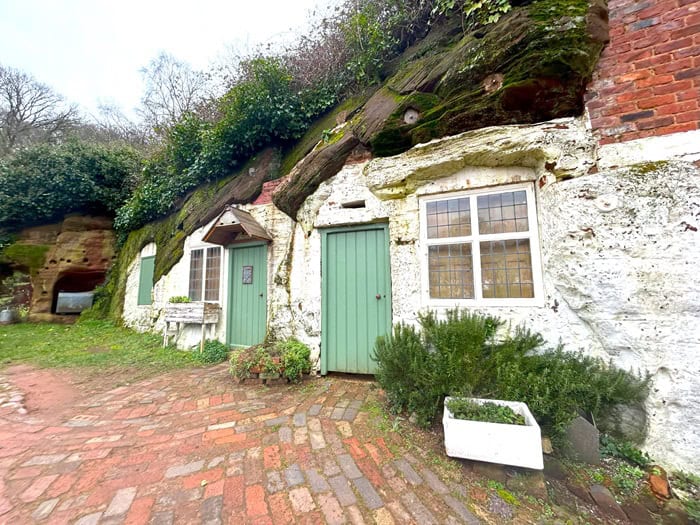

Such an intriguing read about Kinver Edge and the Rock Houses! The blend of history, architecture, and natural beauty makes this landmark truly unique. It’s fascinating how these rock houses have stood the test of time, offering a glimpse into a simpler way of life. This is definitely a place worth exploring for anyone interested in history and nature. Keep sharing these amazing stories!
nice